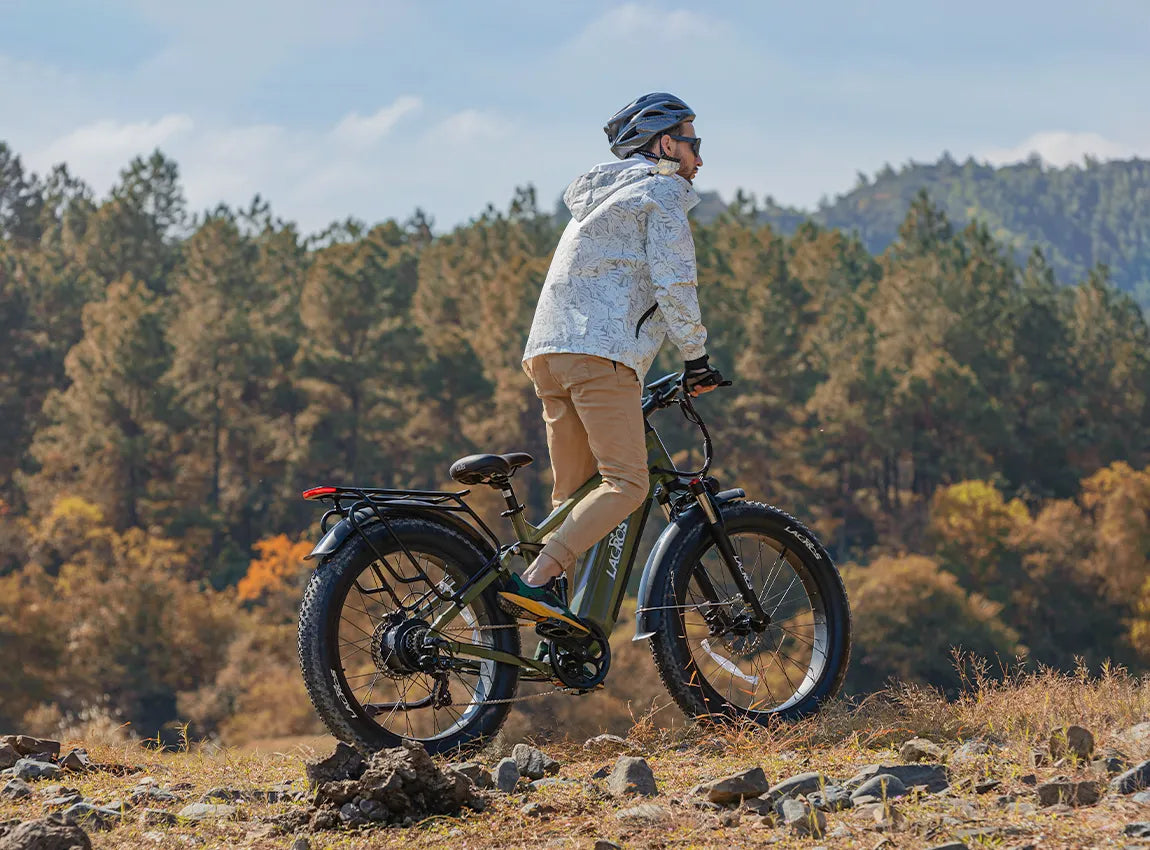As electric bikes become more popular, a growing question has emerged in cycling communities: Are electric bikes allowed on rail trails? The issue is more complex than it seems — touching on not just recreation and safety, but also accessibility, inclusion, and evolving transportation laws.
What Are Rail Trails?
Rail trails are multi-use paths built from decommissioned railway lines, now repurposed for walking, cycling, and outdoor recreation. Their gentle slopes and scenic routes make them ideal for riders of all abilities. For many people, these trails offer a rare opportunity to connect with nature without steep climbs or busy roads — a perfect match for e-bike riders seeking a comfortable, sustainable way to explore.
The Growing Popularity of Electric Bikes
Electric bikes, or e-bikes, have changed the cycling landscape. They combine human power with electric assistance, allowing riders to go farther and climb higher without overexertion. For commuters, e-bikes offer a green and efficient alternative to cars. For outdoor enthusiasts, they make long-distance rides more accessible.
However, e-bikes aren’t just for convenience — for some riders, they are essential mobility tools. Many people with disabilities, chronic pain, or limited stamina use e-bikes as a form of adaptive transportation. These bikes make it possible to continue enjoying outdoor activities and stay active, which is why discussions about banning e-bikes from trails raise significant disability rights concerns.
Also read: 5 Best Sightseeing Places to Ride an Ebike
Laws and Regulations for Electric Bikes on Rail Trails
So, are electric bikes allowed on rail trails? It depends heavily on local laws. Most U.S. states classify e-bikes into three categories:
- Class 1: Pedal-assist only, up to 20 mph
- Class 2: Throttle-assisted, up to 20 mph
- Class 3: Pedal-assist, up to 28 mph
Class 1 e-bikes are typically the most accepted on multi-use trails. Classes 2 and 3 may face restrictions depending on trail management policies.
A few years ago, debates such as the proposed House Bill to ban e-bikes from all trails and rail-trails sparked widespread discussion about fairness and accessibility. Although that proposal is no longer current, it continues to be referenced in conversations about trail access, as it highlighted how a blanket ban could unfairly penalize disabled riders, many of whom rely on e-bikes for mobility.
Under the Americans with Disabilities Act (ADA), certain e-bikes used by riders with mobility disabilities can be considered Other Power-Driven Mobility Devices (OPDMDs). This classification grants them legal protection to use trails, even if motorized devices are generally restricted. In other words, not all e-bikes — and not all riders — are subject to the same rules.
Also read: The Ultimate Guide to E-Bikes on Trails: Laws, Myths, and Classification

Factors That Influence E-Bike Access on Rail Trails
- Trail Management Policies – National parks, state agencies, and local trail associations each set their own e-bike rules.
- Environmental Impact – Some trails limit e-bikes to reduce potential erosion or disturbance to wildlife.
- User Safety and Trail Congestion – Speed differences between cyclists and pedestrians can influence regulations.
- Public Opinion and Advocacy – As more people adopt e-bikes, community attitudes are shifting toward greater acceptance — especially when e-bikes help people stay active and independent.
Safety and Etiquette Tips for Riding E-Bikes on Rail Trails
Whether you ride for recreation or mobility, responsible riding ensures everyone can share the trail safely.
- Respect posted speed limits and slow down when passing others.
- Announce your approach with a bell or friendly call.
- Yield to pedestrians and maintain control on curves or gravel.
- Protect the environment by staying on designated paths.
- Ride responsibly — courtesy builds community support for e-bike access.
Also read: Top 9 Winter Ebike Routes in the United States: Explore the Frosty Trails in Style
Advocacy and Policy Developments for E-Bike Access
The conversation around e-bikes on rail trails is evolving. Disability advocates and cycling organizations are pushing for clearer, more inclusive policies that recognize e-bikes as legitimate mobility aids rather than motorized nuisances.
Online discussions show real frustration among riders who feel excluded by sweeping bans. Many note that e-bikes don’t make riders “superhuman” — they simply allow older adults or those with physical limitations to keep up with friends or enjoy routes they couldn’t otherwise tackle.
As one rider put it, “It gives me an assist, but it doesn’t make me superhuman.” That simple statement captures what policymakers sometimes overlook: e-bikes equalize access, not privilege it.
Alternatives if Electric Bikes Are Not Allowed
If a particular trail doesn’t allow e-bikes, there are still options. Many regions now offer multi-use greenways, bike-friendly parks, and community paths where electric bikes are fully permitted. Riders can also reach out to trail administrators or join local advocacy efforts to request ADA-compliant access for those using e-bikes as mobility devices.
FAQs
Q: Are e-bikes considered motorized vehicles on rail trails?
A: Not always. Many areas exempt low-speed Class 1 e-bikes from motorized bans, especially when used for mobility purposes.
Q: Can people with disabilities legally ride e-bikes where they’re banned?
A: Yes. Under ADA rules, e-bikes used as Other Power-Driven Mobility Devices (OPDMDs) are generally permitted, even where standard e-bikes are restricted.
Q: What can I do if my local trail bans e-bikes?
A: Contact local trail managers, explain your situation, and ask whether ADA accommodations apply. Advocacy and dialogue are key to shaping fair policies.
Conclusion
So, are electric bikes allowed on rail trails? The answer depends on where — and how — you ride. Rules continue to evolve, but one thing is clear: e-bikes have become a bridge between accessibility, sustainability, and outdoor recreation. As more policymakers and communities recognize their benefits, the future of rail trails may well include everyone — from traditional cyclists to adaptive riders — sharing the path.





Share:
How Long Does It Take to Charge an Electric Bike Battery?
Throttle vs. Pedal Assist: Which E-Bike System Is Right for You?